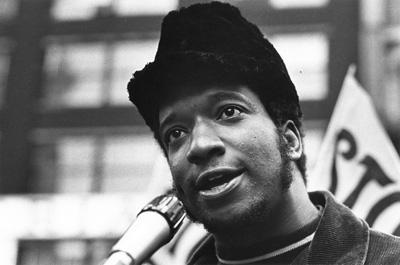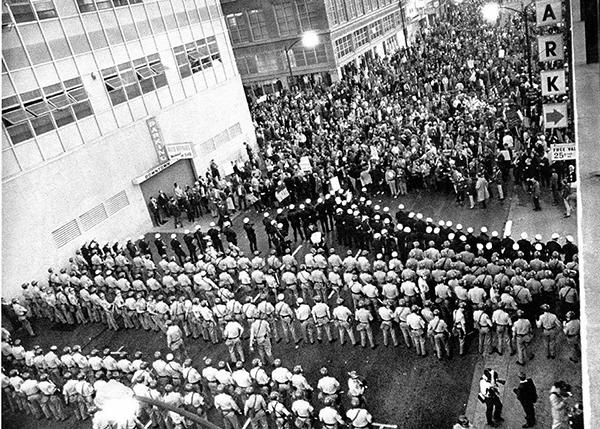Bob Avakian has written that one of three things that has “to happen in order for there to be real and lasting change for the better: People have to fully confront the actual history of this country and its role in the world up to today, and the terrible consequences of this.” (See “3 Things that have to happen in order for there to be real and lasting change for the better.”)
In that light, and in that spirit, “American Crime” is a regular feature of revcom.us. Each installment focuses on one of the 100 worst crimes committed by the U.S. rulers—out of countless bloody crimes they have carried out against people around the world, from the founding of the U.S. to the present day.
See all the articles in this series.
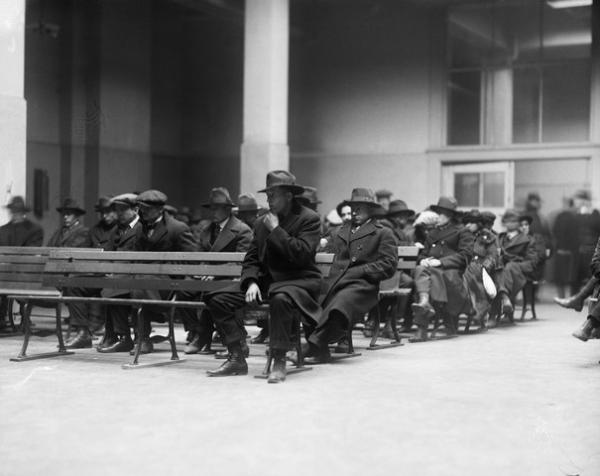

Arrestees of a raid.
THE CRIME
In the wake of the 1917 Russian Revolution and following World War 1, revolutionary movements and organizations spread throughout the world, including in the U.S. Beginning November 1919 and continuing into 1920, the Department of Justice (DOJ) launched the Palmer Raids: massive raids targeting immigrants, communists, socialists, radicals, and anarchists. Their stated targets were “the Reds”—anyone suspected of sympathy with the Russian revolution or membership in any communist or anarchist organization.
As federal agents flooded into meeting places, workplaces, and homes across the country, they viciously beat and arrested everyone they found. Raids were carried out in more than 50 cities. There are no official statistics of numbers of people rounded up in these raids, but estimates range from 4,000 to 10,000.1 The raids were led by Attorney General A. Mitchell Palmer and J. Edgar Hoover (later the FBI director). These raids represented a major escalation of the government’s repressive apparatus and took place in the midst of the “Red Scare,” a campaign to whip up mass hysteria, hatred and violence directed at immigrants, revolutionaries, and radicals.
Although there was no legal basis for most arrests, and most people arrested were later released, many people were deported and many more were held for months without charges. People were beaten and tortured, lives were ruined, and families were torn apart.
One arrested person later said:
[W]hile I was teaching [a class in] algebra and Russian, an agent of the Department of Justice opened the door of the school, walked in with a revolver in his hands and ordered everybody in the school to step aside; then ordered me to step towards him. I wear eye-glasses and the agent of the Department of Justice ordered me to take them off. Then without any provocation, struck me on the head and simultaneously two others struck and beat me brutally. After I was beaten and without strength to stand on my feet, I was thrown down stairs and while I rolled down, other men, I presume also agents of the Department of Justice, beat me with pieces of wood which I later found out were obtained by breaking the banisters. I sustained a fracture of my head, left shoulder, left foot, and right side.2
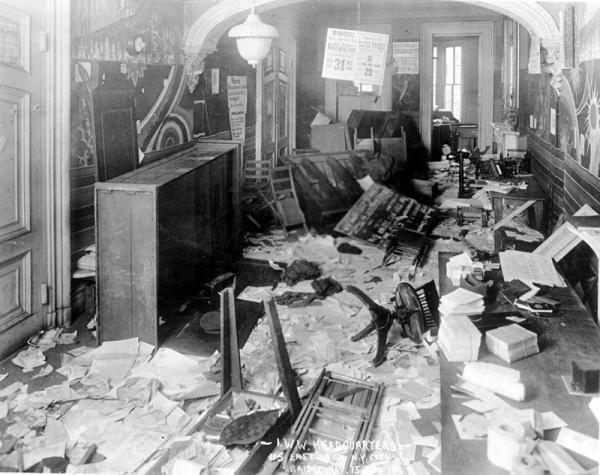

Aftermath of Palmer raid on the IWW (International Workers of the World) office in New York, November 15, 1919.
When the U.S. entered World War 1 in April 1917, the Espionage Act was introduced into Congress and enacted within two months. This act prohibited interference with military operations or recruitment, insubordination in the military, and support of U.S. enemies during wartime, and it was specifically used to stop opposition to the war and other radical activity.
The Espionage Act was amended in May 1918 with the Sedition Act, which specifically prohibited many forms of speech, including “any disloyal, profane, scurrilous, or abusive language about the form of government of the United States ... or the flag of the United States, or the uniform of the Army or Navy.” This was followed by the Immigration Act of 1918, which laid out broad “offenses” that would be cause for deportation of “aliens,” including membership in or affiliation with any anarchist organization or organization advocating the overthrow of the government.
The government used this group of laws to carry out massive arrests of antiwar and radical activists during the war, to attack radical organizations and, through banning use of the postal system, to shut down many radical newspapers like The Masses that had been major voices against the war. The Espionage Act was upheld by the Supreme Court in March 1919 and established a precedent of “clear and present danger” to the government as the basis to suppress free speech.
In June 1919, Palmer established the Radical Division under J. Edgar Hoover. By the end of 1919, this division had reportedly collected 60,000 names of people “under suspicion,” and the stage was set for the Palmer Raids.
Led by Palmer and Hoover, the DOJ carried out the first of the raids on November 7-8, 1919—consciously set to start on the second anniversary of the Russian Revolution. The raids were carried out in over 15 cities and were aimed at the Union of Russian Workers and Russian immigrants generally. One of the raids was at the Russian Peoples House in New York, a community center for Russian immigrants where the Union of Russian Workers had a small office. The building was ransacked, and everyone in the building was rounded up, beaten, thrown down stairs, and detained. Most had no connection to the Union of Russian Workers, which had become mainly a social organization for Russian immigrants. Several different people gave accounts of the brutality of their ordeals:
I was struck on my head, and ... was attacked by one detective, who knocked me down again, sat on my back, pressing me down to the floor with his knee and bending my body back until blood flowed out of my mouth and nose.
They took me to a room in the basement of the jail with a cement floor, cement walls and an iron door. The room was pitch dark, and the only means for lighting or ventilating it ... was a small hole in the door. The floor of this room was hot and the walls were very warm to the touch. I stayed in this room for thirty-six hours.... I was given one glass of water and one slice of bread.... Since my release ... I have been unable to secure employment, being informed wherever I apply and state my record that persons under suspicion of being bolsheviks3 are not desired.
I ... applied for a pass to see a friend, Mike Lozuk, who was arrested on the 8th day of November, 1919, at a meeting place of Russians in Bridgeport [Connecticut]. ... As soon as I appeared ... I was searched and immediately put under arrest and questioned by an agent of the Department Of Justice. Six men, I presume agents of the Department Of Justice, questioned me and threatened to hang me if I do not tell them the truth. In one instance, an agent ... brought a rope and tied it around my neck, stating that he will hang me immediately if I do not tell him who conducts the meetings and who are the main workers in an organization called the Union of Russian Workers. This inquisition lasted fully three hours, after which I was again threatened to be put into a gas-room and suffocated unless I gave more particulars about other men in the Union of Russian Workers.
The major newspapers, tipped off in advance by Palmer’s agents to promote Red Scare propaganda, sent reporters to cover the raid. According to a New York World report, after the raid, the building looked “as if a bomb had exploded in each room.”4 By the next morning, Hoover had sent reports of the raid to newspapers across the country, leading to headlines such as: “REDS HAD PLANNED TO BOMB FIFTH AVE. STORES” and “PLOT TO KILL HIGH OFFICIALS, TAKE PROPERTY, END RELIGION.”5
While information on mass opposition to the raids is difficult to find, according to Report Upon the Illegal Practices of the United States Department of Justice (issued by a group of people in the legal arena in May 1920), a mass meeting of protest was held the day after the November 7 raids in New York at Madison Square Garden.6
The second round of the Palmer Raids was aimed at the Communist Party and the Communist Labor Party, where the DOJ had undercover agents. These agents were instructed to organize meetings on the night of January 2, 1920, so the raids could round up as many people as possible and records could be seized at the same time.7 Raids were carried out in at least 33 cities and dozens of small towns.8
Those arrested in the raids were tortured, beaten, subjected to public humiliation, and, in Boston, paraded through streets in chains. Some were held for months without charges in solitary confinement or with little food, no sanitation, and no medical care.9
The Report Upon the Illegal Practices describes the raids in the city of Detroit on January 2, 1920 in which 800 people were arrested in raids on the headquarters of the Communist Party and other locations. They were imprisoned for three to six days in a dark, windowless, narrow corridor in the city’s Federal Building, with one water fountain, one toilet, no food for 24 hours, and no communication with family or attorneys. They were “so closely packed that they had to step over one another’s bodies to move about at all.” Three months later, there were still 450 people held.10
After the January 1920 raids, the Department of Justice sent out form letters, cartoons, and other propaganda material to newspapers across the country to be used by the press to create public opinion in support of this repression.11
To protect their undercover agents, the DOJ relied on getting people who had been arrested to confess to being communists or anarchists or to name other people. This was undercut by an article which had been printed in many radical publications in October 1919. This article popularized the right to an attorney for immigrants caught up in raids, and also advised people to say nothing to authorities when arrested.12 Prior to the 1920 raids, DOJ rules said that arrested persons were supposed to have the right to a lawyer at the beginning of their arrest. Just three days before the 1920 raids, the rule was changed so legal representation did not have to be provided until “later” in the arrest process.13
While the Espionage, Sedition, and Immigration Acts provided a legal framework for the raids, the DOJ actually had no legal authority to carry out raids and roundups of people for deportation. The official legal authority for enforcing immigration laws and issuing arrest warrants for deportation belonged to the Labor Department. But DOJ agents arrested thousands of people without warrants. In fact, DOJ agents were instructed to telegraph Hoover to obtain warrants from the Labor Department for individuals after they were arrested.14,15
As the violence and extralegal acts committed during the raids became widely known, there was opposition even from elements of the ruling class. In May 1920 a group of prominent lawyers, judges, and law professors signed and published the Report Upon the Illegal Practices of the United States Department of Justice. The authors clearly stated where they stood and what worried them: “We make no argument in favor of any radical doctrine as such, whether Socialist, Communist or Anarchist. No one of us belongs to any of these schools of thought.... No organizations of radicals acting through propaganda over the last six months could have created as much revolutionary sentiment in America as has been created by the acts of the Department of Justice itself.”16
The report exposed illegal and unconstitutional acts that the DOJ had committed in the raids in violation of democratic and civil rights. It reprinted instructions given to DOJ agents to set up meetings on the date of the January 2 raids and reproduced propaganda pieces the DOJ sent to the press. Principally, it reproduced firsthand accounts of people arrested and violently treated in the raids. The report documented six ways the DOJ violated the U.S. Constitution in the raids: 1) cruel and unusual punishments; 2) arrests without warrant; 3) unreasonable searches and seizures; 4) use of undercover “agents provocateurs” (agents who incite others to engage in illegal activity); 5) compelling persons to be witnesses against themselves; 6) propaganda by the Department of Justice.
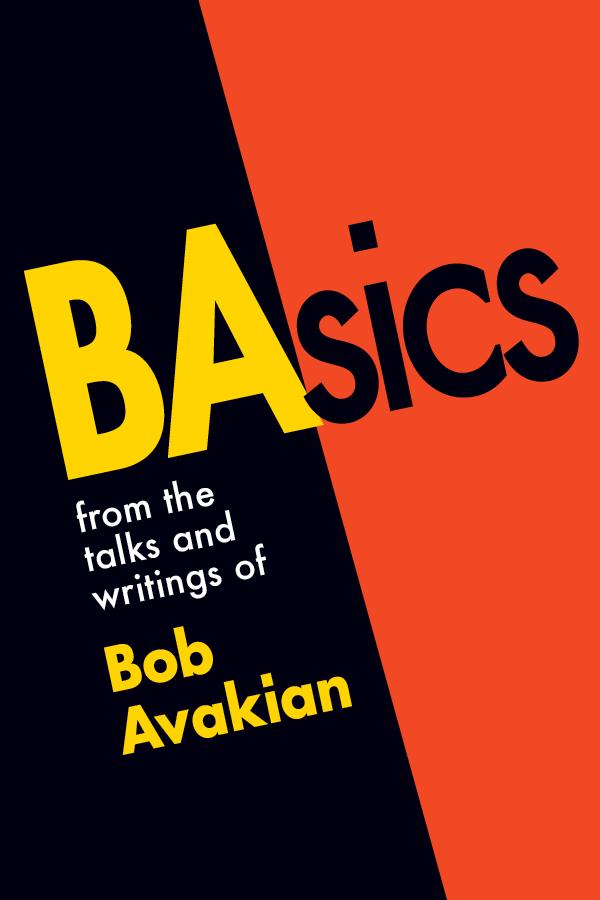

BAsics from the talks and writings of Bob Avakian
When a monopoly of political power—and, in a concentrated way, the monopoly of “legitimate” armed force—is in the hands of one group in society, and that group excludes others from that monopoly of power and force, then that is a dictatorship of the ruling group—or class—regardless of whether or not that ruling group allows those it excludes from power, and over whom it rules in fact, to take part in elections to vote for different representatives of the ruling class, as happens in the U.S. and a number of other countries. Political rule in the U.S., regardless of whether or not there is an open and undisguised tyranny, is and always has been a bourgeois dictatorship, a dictatorship of the ruling capitalist class (or, in the early history of the U.S., before the defeat and abolition of the slave system, through the Civil War, what existed was the dictatorship of the ruling classes—the slaveowning as well as the capitalist class, or bourgeoisie).
—Bob Avakian, BAsics 1:23
THE CRIMINALS
A. Mitchell Palmer, U.S. Attorney General from 1919 to 1921, was the architect of the brutal raids in November 1919 and January 1920. Palmer came into office as a liberal Democrat—he supported women’s right to vote and workers’ right to strike, and he released some people previously arrested under the Espionage Act. After a string of bombings in spring 1919 attributed to anarchists, Palmer, acting on behalf of the ruling class, went after everyone considered to be a communist, anarchist, socialist, or other radical with a vengeance. He later blamed Congress for not acting quickly enough against “the Reds” and, after the raids, stated, “I apologize for nothing that the Department of Justice has done in this matter. I glory in it.”17
Edgar Hoover was appointed in 1919 by Palmer to head the Radical Division of the General Intelligence Unit, whose goal was to monitor and disrupt the work of domestic radicals. Hoover played a prominent role in organizing and orchestrating the Palmer Raids and their aftermath. He manipulated the press to create public opinion by feeding propaganda and press releases before, during, and after the raids. Hoover became the director of the Federal Bureau of Investigation (FBI), established not long after the Palmer Raids. He remained FBI director and continued the mission of going after communists until his death, attacking progressive and radical causes and people, including the vicious repression done under COINTELPRO in the 1960s and 1970s. (See American Crime series on FBI-Chicago police assassination of Fred Hampton, FBI-COINTELPRO targeting of the Black freedom struggle and COINTELPRO-FBI targeting of the New Left.)
Woodrow Wilson. As U.S. president, Wilson held ultimate responsibility for the actions of the Justice Department and the Palmer Raids. In the 1916 presidential campaign, he urged that legislation be passed against people who displayed disloyal behavior and said that they had no right to civil liberties because of their behavior: “Any man who carries a hyphen about with him [referring to German-American, Italian-American, etc.] carries a dagger that he is ready to plunge into the vitals of this Republic.”18 He sent 13,000 troops into Russia after the revolution there to intervene in the civil war with the intention of destroying the socialist revolution and of dragging Russia back into World War 1. During World War 1 he established the Alien Enemy Bureau in the Department of Justice to arrest and jail allegedly disloyal foreigners without trial. He pushed through Congress the Espionage, Sedition, and Immigration Acts, which broadened the criteria for deportation.
The media was a major factor in whipping up anti-immigrant, anti-radical and anti-Russian Revolution sentiment. The press enthusiastically and prominently published propaganda from the DOJ that incited public opinion against communists, radicals, and immigrants.
THE ALIBI
In the immediate post-World War 1 period, the U.S. was wracked by a tremendous amount of upheaval in response to rampant inflation and the lack of jobs for veterans returning from the war. 1919 saw major strikes in the steel, coal, and meat-packing industries as well as hundreds of strikes throughout the country. Almost four million people were on strike in 1919, and there was an average of 200 strikes per month. Early January 1919 saw a general strike in Seattle of 60,000 workers which paralyzed the city’s normal services for about a week. The nationwide U.S. Steel strike of September 1919 involved over 365,000. Historians describe this upheaval as raising new demands and revolutionary language inspired by the Russian Revolution.19
The summer and early fall of 1919 also saw more than two dozen Black communities targeted by vigilante attacks by white mobs. For the first time, the press acknowledged Black people’s resistance in fighting back against these attacks, and at the same time tried to demonize the resistance—for example, a headline in Chicago read: “Reds Try to Stir Negroes to Revolt.”20
As all this was going on, in May and June 1919, there were attempted and actual bombings, attributed to anarchists, at the homes of several prominent capitalists and government officials, including Palmer. These bombings became a nodal point in ratcheting up the propaganda war to whip up “anti-red” and anti-immigrant sentiment. A headline in the New York Times on June 8, 1919 declared: “RUSSIAN REDS ARE BUSY HERE—Workers’ Union Has 500 Agents Spreading Bolshevism in the United States.”
During the period following World War 1 and the victory of the 1917 Russian revolution, speeches from the highest levels of government and editorials and articles in the press charged immigrants, labor radicals, communists, socialists, and anarchists with plans to overthrow the government by force in the near future. Immigrants were especially demonized and targeted as threats to the U.S. The government used the anarchist bombings of 1919 to create public opinion and justification for the raids, even though the raids targeted a wide spectrum of people, not just anarchists.
Palmer justified the raids in an essay he wrote in February 1920, “The Case Against the ‘Reds’”:
Like a prairie-fire, the blaze of revolution was sweeping over every American institution of law and order.... It was eating its way into the homes of the American workman, its sharp tongues of revolutionary heat were licking the altars of the churches, leaping into the belfry of the school bell, crawling into the sacred corners of American homes, seeking to replace marriage vows with libertine laws, burning up the foundations of society.
In a December 1915 address to Congress, President Woodrow Wilson stated in part:
There are citizens of the United States, I blush to admit, born under other flags but welcomed under our generous naturalization laws to the full freedom and opportunity of America, who have poured the poison of disloyalty into the very arteries of our national life; who have sought to bring the authority and good name of our Government into contempt, to destroy our industries wherever they thought it effective for their vindictive purposes to strike at them, and to debase our politics to the uses of foreign intrigue.... I urge you to enact such laws at the earliest possible moment and feel that in doing so I am urging you to do nothing less than save the honor and self-respect of the nation. Such creatures of passion, disloyalty, and anarchy must be crushed out.”21
THE ACTUAL MOTIVE
The early 1900s were marked by tremendous labor unrest and massive radical and antiwar activity in the U.S. Many working people, including many immigrants, were followers of socialist, communist, or anarchist parties. While the U.S. emerged from World War 1 as a rising imperialist power, the most significant change in the world following World War 1 was the Russian Revolution—the first time in history that a communist revolution had triumphed anywhere in the world. In the wake of this revolution, radical and revolutionary sentiment grew even stronger in large parts of the world as well as in the U.S. The growth of revolutionary movements in many countries, the widespread wave of support for revolution and the influence of revolutionary ideas sent fear of revolt and revolution into the rulers of every capitalist country.
As a major imperialist power, the U.S. rulers could not allow the spread and growing influence of communism. The federal government needed and began to forge a centralized repressive apparatus. The Palmer Raids, along with suppression of dissent, violation of constitutional rights, illegal arrests, and widespread propaganda against “un-American” activity and ideas, were all part of the campaign to consolidate this apparatus and crush communist and radical opposition.
REPEAT OFFENDERS
The legal basis for the Palmer Raids, the Espionage Act, is still in effect and being used. Daniel Ellsberg was indicted under the Espionage Act for release of the Pentagon papers. It has been used, or threatened to be used, against Chelsea Manning, Julian Assange, Edward Snowden, and Reality Winner, among others.
Key Sources:
Books
Ackerman, Kenneth D., The Young J Edgar: Hoover, the Red Scare and the Assault on Civil Liberties, Carroll & Graf, 2007.
Hoyt, Edwin P., The Palmer Raids 1919-1920: An Attempt to Suppress Dissent, The Seabury Press, 1969.
Preston Jr., William, Aliens and Dissenters: Federal Suppression of Radicals, 1903-1933, 2nd edition, University of Illinois Press, 1994.
Report Upon the Illegal Practices of the United States Department of Justice, The National Popular Government League, May 1920.
Articles
“Espionage Act of 1917,” Wikipedia.org
“The Case Against the Reds,” A. Mitchell Palmer, The Forum, February 1920
1. The only official numbers released on numbers of people rounded up were released by the Department of Justice as of midnight January 2, 1920: 2,585, citing numbers by city and/or state. One source estimates up to 5,000 rounded up in that January raid. No additional official statistics were ever released for either the November or January raids. No solid numbers are available for the November raids other than 211 seized in New York at the Russian Peoples House, all but 38 being released by morning, and as many as 1,000 were seized the following day, with most released without charge. U.S. Senator Thomas J. Walsh of Montana claimed that 10,000 people were rounded up. And some sources state that 6,500 people were ultimately released without any charges. [back]
2. Report Upon the Illegal Practices of the United States Department of Justice, The National Popular Government League, May 1920. All firsthand accounts from the raids are drawn from this report. [back]
3. “Bolsheviks” refers to the Bolshevik Party, led by V.I. Lenin, who led the victorious Russian Revolution in 1917. [back]
4. Ackerman, Kenneth D., The Young J Edgar: Hoover, the Red Scare and the Assault on Civil Liberties, Carroll & Graf, 2007, p.116. [back]
5. Ackerman, p.121. [back]
6. Report Upon the Illegal Practices of the United States Department of Justice, p.18. [back]
7. Report Upon the Illegal Practices of the United States Department of Justice, pp.39-40. [back]
8. Ackerman, p.180. [back]
9. Report Upon the Illegal Practices of the United States Department of Justice, Affidavits 1-1c, 2-2f, 5a, 5b and 9. [back]
10. Report Upon the Illegal Practices of the United States Department of Justice, pp.22-23. [back]
11. Report Upon the Illegal Practices of the United States Department of Justice, p.66. [back]
12. Preston Jr., William. Aliens and Dissenters: Federal Suppression of Radicals, 1903-1933. 2nd edition. Urbana: University of Illinois Press, 1994. pp.214-215. [back]
13. Preston, pp.212-217. [back]
14. Report Upon the Illegal Practices of the United States Department of Justice, p.44. [back]
15. Preston, pp.210-211. There was no Immigration Department or ICE (Immigration and Customs Enforcement) in 1919. A. Mitchell Palmer himself, in “The Case Against the ‘Reds’” (The Forum February 1920, p.4) defends how the DOJ and the Department of Labor came to work together illegally:
Although this law [Immigration Act of 1918] is entirely under the jurisdiction of the Department of Labor, it seemed to be the only means at my disposal of attacking the radical movement. To further this plan, as Congress had seen fit to refuse appropriations to the Department of Labor which might have enabled it to act vigorously against the “Reds,” I offered to cooperate with the immigration officials to the fullest extent. My appropriation became available July 19, 1919. I then organized what is known as the Radical Division [headed by Hoover]. [back]
16. Report Upon the Illegal Practices of the United States Department of Justice pp.3-4. [back]
17. Hoyt, Edwin P., The Palmer Raids 1919-1920: An Attempt to Suppress Dissent, The Seabury Press, 1969, p.55. [back]
18. Schmidt, Regin, Red Scare: FBI and the Origins of Anticommunism in the United States, 1919-1943, Museum Tusculanum Press, University of Copenhagen, 2000, p.74. [back]
19. PBS film American Experience: The Bombing of Wall Street, 2018. [back]
20. “First Red Scare,” Wikipedia.org. [back]
21. “Espionage Act of 1917,” Wikipedia.org. [back]

